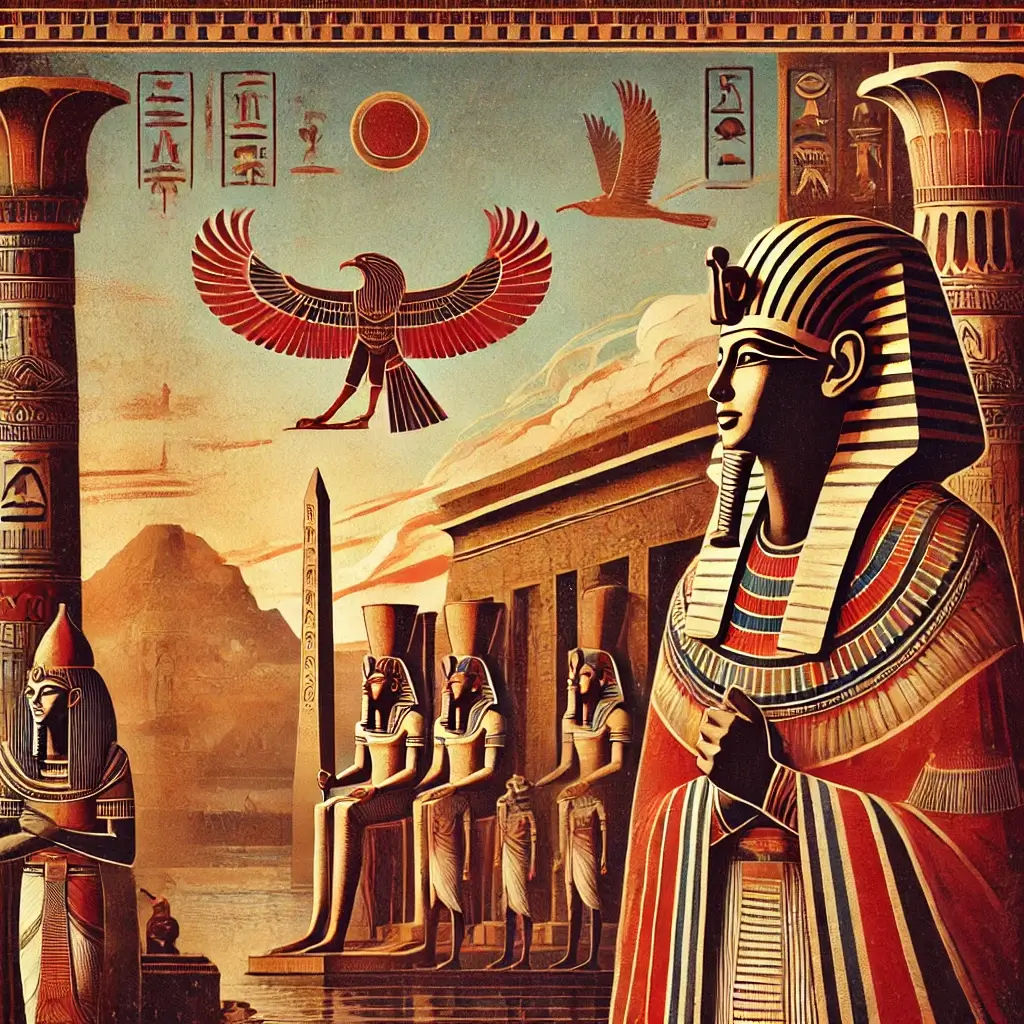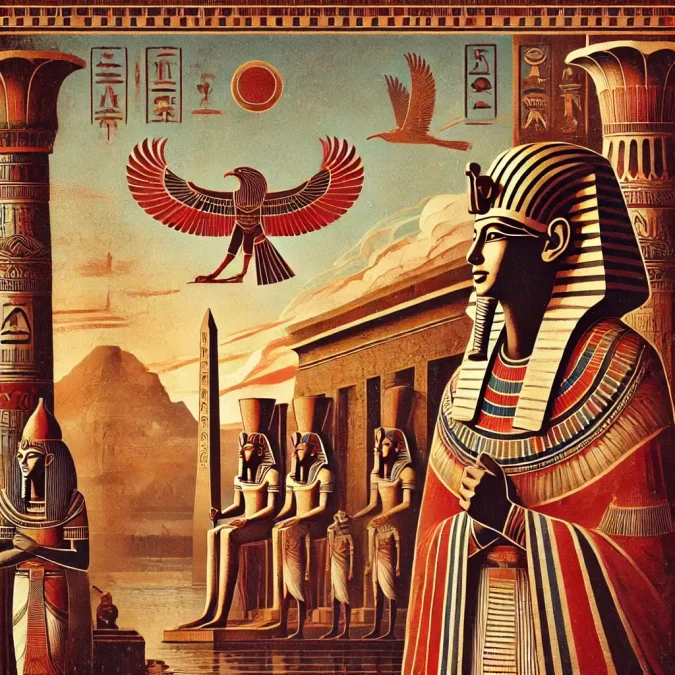
The Twenty-Ninth Dynasty of Egypt, also known as Dynasty XXIX, the 29th Dynasty, or Dynasty 29, is typically classified as the fourth dynasty of the Ancient Egyptian Late Period. The dynasty was founded in 398 BC following the overthrow of Amyrtaeus, the sole pharaoh of the Twenty-Eighth Dynasty, by Nefaarud I. The Twenty-Ninth Dynasty ruled Egypt until 380 BC, when it was disestablished after the overthrow of its last ruler, Nefaarud II. The 29th Dynasty, also known as the Mendesian Dynasty due to its rulers originating from the city of Mendes, was a period marked by political intrigue, efforts to restore stability, and ongoing struggles to resist external threats, particularly from the Persian Empire.
In this article, we will explore the historical background of the Twenty-Ninth Dynasty, provide a detailed account of each of its rulers, and examine the political and cultural developments that took place during this brief yet significant chapter in Egyptian history. We will also discuss the challenges faced by the Mendesian rulers as they sought to maintain Egypt’s independence and revive its cultural traditions.
Historical Background of the Twenty-Ninth Dynasty
The Twenty-Eighth Dynasty of Egypt, led by Amyrtaeus, marked a brief period of native Egyptian rule following the successful expulsion of the Persians in 404 BC. However, Amyrtaeus’s reign was short-lived, and in 398 BC, he was overthrown by Nefaarud I, who established the Twenty-Ninth Dynasty. Nefaarud I, also known as Nepherites I, was a native of Mendes, a city located in the eastern Delta region of Egypt. Mendes became the capital of the new dynasty, and its rulers sought to stabilize the country, restore traditional religious practices, and resist external threats.
The Twenty-Ninth Dynasty faced significant challenges, including political instability, power struggles among regional leaders, and the looming threat of Persian reconquest. Despite these challenges, the Mendesian rulers worked to maintain Egypt’s independence and foster a sense of national unity. The dynasty came to an end in 380 BC, when its last ruler, Nefaarud II, was overthrown by Nectanebo I, who founded the Thirtieth Dynasty.
The Rulers of the Twenty-Ninth Dynasty
The Twenty-Ninth Dynasty was ruled by a series of pharaohs, each of whom played a role in shaping the history of this period. Below, we provide an overview of each ruler of the dynasty and their significant achievements.
1. Nefaarud I (Nepherites I) (398–392 BC)
Nefaarud I, also known as Nepherites I, was the founder of the Twenty-Ninth Dynasty and the ruler who overthrew Amyrtaeus, the last pharaoh of the Twenty-Eighth Dynasty. Nefaarud I established his capital at Mendes, a city in the eastern Delta, and sought to consolidate power and stabilize Egypt after the political turmoil of the previous years.
Nefaarud I’s reign was marked by efforts to strengthen Egypt’s military and resist the threat of Persian reconquest. He formed alliances with other regional powers, including Sparta, in an attempt to counter the influence of the Achaemenid Empire. Nefaarud I also undertook several building projects, including the construction and restoration of temples dedicated to the traditional gods of Egypt, as part of his efforts to legitimize his rule and promote religious revival.
Despite his efforts to maintain stability, Nefaarud I faced challenges from rival factions within Egypt, and his reign was relatively short, lasting only six years. His efforts to resist Persian influence and restore Egypt’s cultural heritage laid the foundation for the subsequent rulers of the Twenty-Ninth Dynasty.
2. Hakor (Achoris) (392–380 BC)
Hakor, also known as Achoris, succeeded Nefaarud I as pharaoh and is often considered the most significant ruler of the Twenty-Ninth Dynasty. Hakor’s reign was marked by a period of relative stability and prosperity, as he worked to strengthen Egypt’s military, foster economic growth, and promote cultural and religious revival.
Hakor continued the policies of his predecessor by forming alliances with other regional powers to counter the threat of Persian reconquest. He provided support to the Greek city-states that were in conflict with the Persian Empire, and he strengthened Egypt’s military by hiring Greek mercenaries and improving the country’s fortifications. Hakor’s diplomatic efforts helped to maintain Egypt’s independence during a time when the Persian Empire was seeking to expand its influence in the eastern Mediterranean.
In addition to his military achievements, Hakor is known for his contributions to Egyptian architecture and his support for the construction and restoration of temples. He undertook building projects at several important religious sites, including Karnak and Memphis, and sought to promote the worship of the traditional gods of Egypt. Hakor’s reign represented a period of cultural revival, as he worked to restore the grandeur of Egypt’s past and reinforce the connection between the pharaoh and the divine.
3. Psammuthes (391–389 BC)
Psammuthes was a pharaoh who ruled for a brief period during the reign of Hakor. The circumstances of Psammuthes’s rise to power are not well-documented, but it is believed that he may have been a rival claimant to the throne who briefly managed to assert control over part of Egypt. His reign lasted only a few years, and he was eventually deposed by Hakor, who regained control of the country.
The brief reign of Psammuthes highlights the political instability that characterized the Twenty-Ninth Dynasty, as rival factions and regional leaders vied for power. Despite the challenges posed by these internal power struggles, Hakor was able to maintain his position as pharaoh and continue his efforts to strengthen Egypt and resist foreign domination.
4. Nefaarud II (380 BC)
Nefaarud II was the last ruler of the Twenty-Ninth Dynasty, and his reign was extremely short, lasting only a few months. Little is known about Nefaarud II’s rule, as his time on the throne was cut short by his overthrow at the hands of Nectanebo I, who founded the Thirtieth Dynasty of Egypt.
The overthrow of Nefaarud II marked the end of the Twenty-Ninth Dynasty and the beginning of a new chapter in the history of ancient Egypt. The brief and tumultuous nature of Nefaarud II’s reign reflects the ongoing challenges faced by the Mendesian rulers, as they struggled to maintain control over a politically fragmented and unstable country.
Political and Cultural Developments During the Twenty-Ninth Dynasty
The Twenty-Ninth Dynasty of Egypt was a period marked by political intrigue, efforts to restore stability, and ongoing struggles to resist external threats, particularly from the Persian Empire. Despite the challenges they faced, the Mendesian rulers worked to maintain Egypt’s independence, promote cultural revival, and strengthen the country’s military and economy.
Military and Diplomatic Efforts to Resist Persian Influence
One of the key challenges faced by the rulers of the Twenty-Ninth Dynasty was the threat of Persian reconquest. The Achaemenid Empire, which had previously ruled Egypt during the Twenty-Seventh Dynasty, sought to regain control of the country, and the Mendesian rulers were determined to resist this threat. Nefaarud I and Hakor both formed alliances with other regional powers, including Sparta and the Greek city-states, in an effort to counter Persian influence.
Hakor, in particular, was successful in strengthening Egypt’s military and maintaining its independence during a time of increasing tension in the eastern Mediterranean. He hired Greek mercenaries to bolster Egypt’s forces and worked to improve the country’s fortifications. The diplomatic and military efforts of the Mendesian rulers helped to ensure that Egypt remained free from Persian domination during the Twenty-Ninth Dynasty.
Cultural Revival and Religious Restoration
The Twenty-Ninth Dynasty was also a period of cultural revival and religious restoration. The Mendesian rulers sought to legitimize their rule by emphasizing their connection to the traditional gods of Egypt and by supporting the construction and restoration of temples. Nefaarud I and Hakor both undertook building projects at important religious sites, including Karnak, Memphis, and Mendes, as part of their efforts to promote the worship of the traditional gods and reinforce the connection between the pharaoh and the divine.
Hakor’s reign, in particular, was marked by a renewed emphasis on cultural and religious revival. He supported the priesthoods of the major deities, including Amun, Ra, and Osiris, and sought to restore the grandeur of Egypt’s past by commissioning new temples and monuments. The emphasis on religious patronage helped to reinforce the authority of the Mendesian rulers and promote a sense of continuity with Egypt’s ancient past.
The Decline and Fall of the Twenty-Ninth Dynasty
The decline of the Twenty-Ninth Dynasty was closely linked to the ongoing political instability and power struggles that characterized this period of Egyptian history. The brief reign of Psammuthes and the short-lived rule of Nefaarud II reflect the challenges faced by the Mendesian rulers as they struggled to maintain control over a politically fragmented country. The lack of a stable succession and the ongoing threat of foreign invasion made it difficult for the Mendesian rulers to establish a lasting dynasty.
In 380 BC, Nefaarud II was overthrown by Nectanebo I, who founded the Thirtieth Dynasty of Egypt. Nectanebo I’s rise to power marked the beginning of a new chapter in the Late Period, as he sought to restore stability and continue the efforts to maintain Egypt’s independence. The fall of the Twenty-Ninth Dynasty represents the end of a brief but significant period in Egyptian history, characterized by efforts to resist foreign domination and restore the cultural and religious traditions of the past.
Conclusion
The Twenty-Ninth Dynasty of Egypt, also known as the Mendesian Dynasty, was a brief but significant chapter in the history of the Late Period. Founded by Nefaarud I following the overthrow of Amyrtaeus, the dynasty was marked by efforts to restore stability, promote cultural revival, and resist the threat of Persian reconquest. The rulers of the Twenty-Ninth Dynasty, including Nefaarud I, Hakor, Psammuthes, and Nefaarud II, faced significant challenges as they worked to maintain Egypt’s independence and foster a sense of national unity.
Despite the political instability and power struggles that characterized this period, the Mendesian rulers made important contributions to the cultural and religious life of Egypt. Their efforts to restore the grandeur of Egypt’s past and promote the worship of the traditional gods helped to reinforce the authority of the pharaoh and promote a sense of continuity with the ancient past. The fall of the Twenty-Ninth Dynasty and the rise of the Thirtieth Dynasty marked the beginning of a new chapter in the history of ancient Egypt, as the country continued its struggle for independence and cultural revival during the Late Period.
